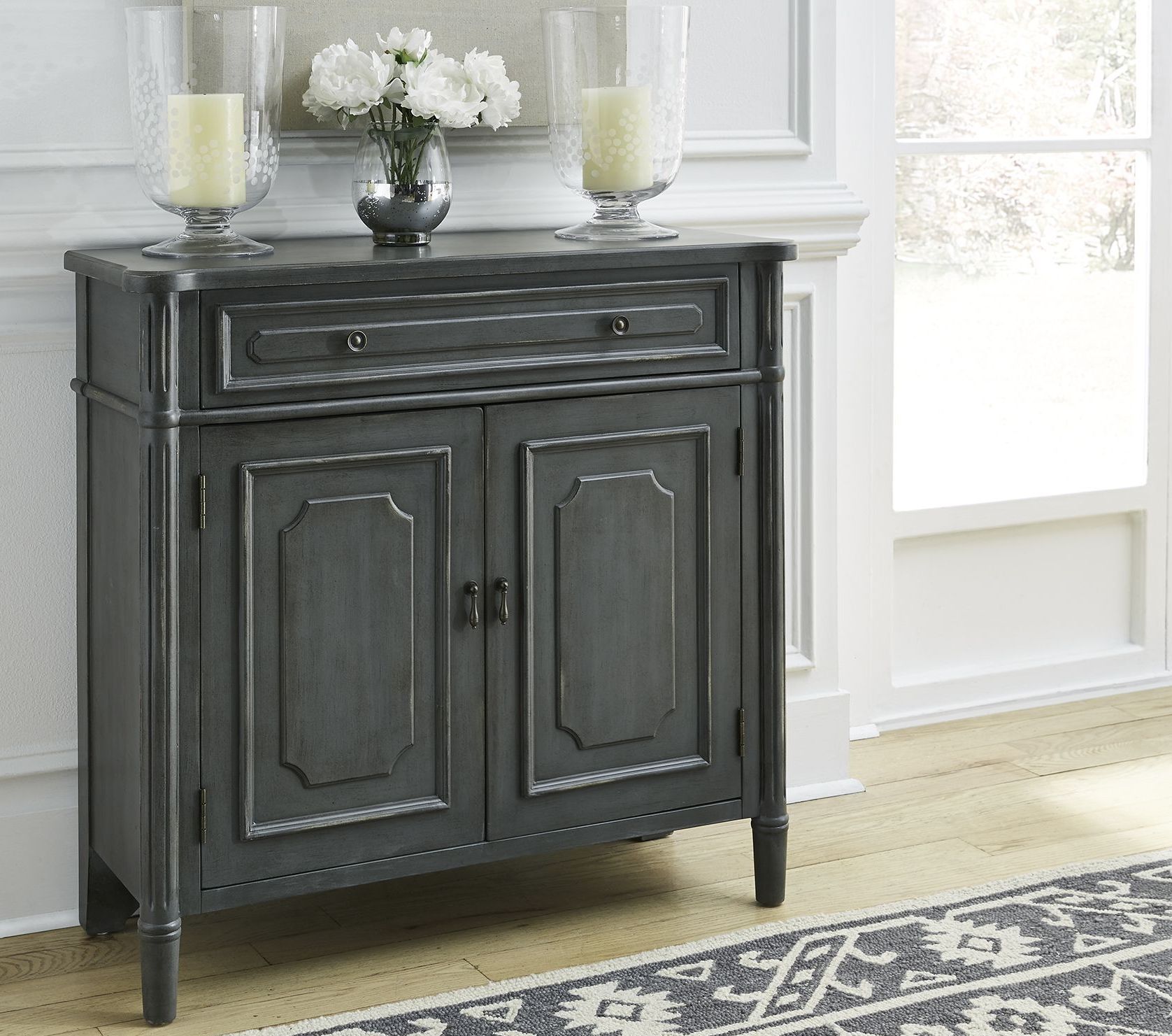Functionality and Practical Applications of a Grey 2-Door Accent Cabinet: 2 Door Accent Cabinet Grey

A grey two-door accent cabinet offers versatile storage solutions for various home environments, enhancing both functionality and aesthetics. Its compact design makes it suitable for smaller spaces while its neutral color complements diverse interior styles. The enclosed nature of the cabinet provides significant advantages over open shelving in terms of dust protection and visual organization.
Versatile Storage Solutions for the Home
The grey two-door accent cabinet can significantly improve home organization. Its closed storage provides a discreet way to keep items neatly tucked away, enhancing the overall aesthetic appeal of a room. Three distinct applications showcase its practicality. Firstly, in a living room, it can house media components such as a DVD player, gaming consoles, and remotes, keeping them organized and dust-free. Secondly, in a hallway, it can serve as a storage solution for shoes, hats, and gloves, maintaining a tidy entryway. Thirdly, in a bedroom, it can store extra linens, blankets, and seasonal clothing, maximizing space and minimizing clutter.
Advantages of Two-Door Cabinets over Other Storage Options
Choosing a two-door cabinet offers several advantages over alternative storage solutions. Compared to open shelving, the enclosed design effectively protects stored items from dust accumulation, ensuring they remain clean and in good condition. This is particularly beneficial for items susceptible to dust damage, like electronics or delicate textiles. Furthermore, the doors conceal the contents, maintaining a visually tidy appearance, unlike open shelving which can often appear cluttered, even when organized. A two-door cabinet also provides superior organization compared to a single-door cabinet; the division created by the central partition allows for better separation and categorization of stored items.
Influence of Cabinet Size and Dimensions on Placement and Functionality, 2 door accent cabinet grey
The size and dimensions of a two-door accent cabinet directly impact its placement and functionality within a room. A smaller cabinet (e.g., 30 inches wide, 36 inches tall) is ideal for narrow hallways or smaller living rooms, offering convenient storage without overwhelming the space. Conversely, a larger cabinet (e.g., 48 inches wide, 72 inches tall) is better suited for larger rooms, providing ample storage capacity. Consider the available floor space and the height of the surrounding furniture when choosing a cabinet. A tall, narrow cabinet can be placed in a corner to maximize space utilization in a smaller room, while a wider, shorter cabinet might be more appropriate for a media console in a larger living room. Careful consideration of these dimensions ensures optimal functionality and visual harmony within the room’s design.
Manufacturing and Material Considerations for a Grey 2-Door Accent Cabinet

The production of a grey two-door accent cabinet involves careful consideration of materials and manufacturing processes to achieve both aesthetic appeal and structural integrity. The choice of materials significantly impacts the final product’s durability, cost, and overall visual effect. Different manufacturing techniques are employed to ensure a high-quality finish and longevity.
Material Selection for a Grey Accent Cabinet
Several materials are suitable for constructing a grey two-door accent cabinet, each offering a unique combination of properties. Solid wood, medium-density fiberboard (MDF), and particleboard are common choices. Solid wood, such as oak or pine, provides exceptional durability and a luxurious aesthetic, but comes at a higher cost. Its natural grain adds character and warmth. MDF offers a smooth, consistent surface ideal for painting, making it a cost-effective option with good stability. Particleboard, while the most economical, is less durable and prone to damage. The choice depends on the desired balance between cost, durability, and aesthetic preference.
Paint and Finish Options for a Grey Accent Cabinet
Achieving the desired grey finish is crucial for the cabinet’s overall look. Paints and finishes impact both the visual appearance and the cabinet’s protection. Matte finishes provide a subtle, understated look, minimizing reflections and creating a calm, sophisticated feel. They are less likely to show imperfections in the underlying surface. Gloss finishes, conversely, offer a sleek, modern appearance with high reflectivity. They are more susceptible to showing scratches and imperfections, but they can add a touch of elegance and visual impact. Other finishes, such as lacquer or varnish, can enhance durability and provide added protection against moisture and wear.
Manufacturing Process of a Grey 2-Door Accent Cabinet
The manufacturing process involves several key steps, each requiring precision and attention to detail to ensure a high-quality final product.
- Material Selection and Cutting: Choosing the appropriate material (solid wood, MDF, or particleboard) based on the desired quality and budget. Precise cutting of the cabinet components according to the design specifications using machinery like CNC routers or panel saws.
- Assembly: Joining the cut components using techniques like doweling, dado joints, or pocket screws. Ensuring accurate alignment and secure fastening is vital for structural integrity.
- Surface Preparation: Sanding the assembled cabinet to achieve a smooth surface, free from imperfections. Filling any gaps or imperfections with wood filler and sanding again for a flawless finish.
- Priming: Applying a primer coat to the cabinet’s surface. This provides a uniform base for the topcoat and enhances paint adhesion. Choosing a primer compatible with the chosen topcoat is crucial.
- Painting: Applying several coats of grey paint, allowing each coat to dry completely before applying the next. Using a high-quality paint suitable for furniture ensures durability and a consistent finish. The choice of matte or gloss finish depends on the desired aesthetic.
- Finishing: Applying a clear topcoat, such as lacquer or varnish, to protect the paint and enhance durability. This provides a protective layer against scratches, moisture, and wear.
- Hardware Installation: Attaching hinges, handles, and other hardware components. Ensuring the hardware is securely fastened and functions smoothly.
- Quality Control: Inspecting the finished cabinet for any defects, such as uneven paint, loose joints, or damaged hardware. Addressing any imperfections before packaging and shipping.
